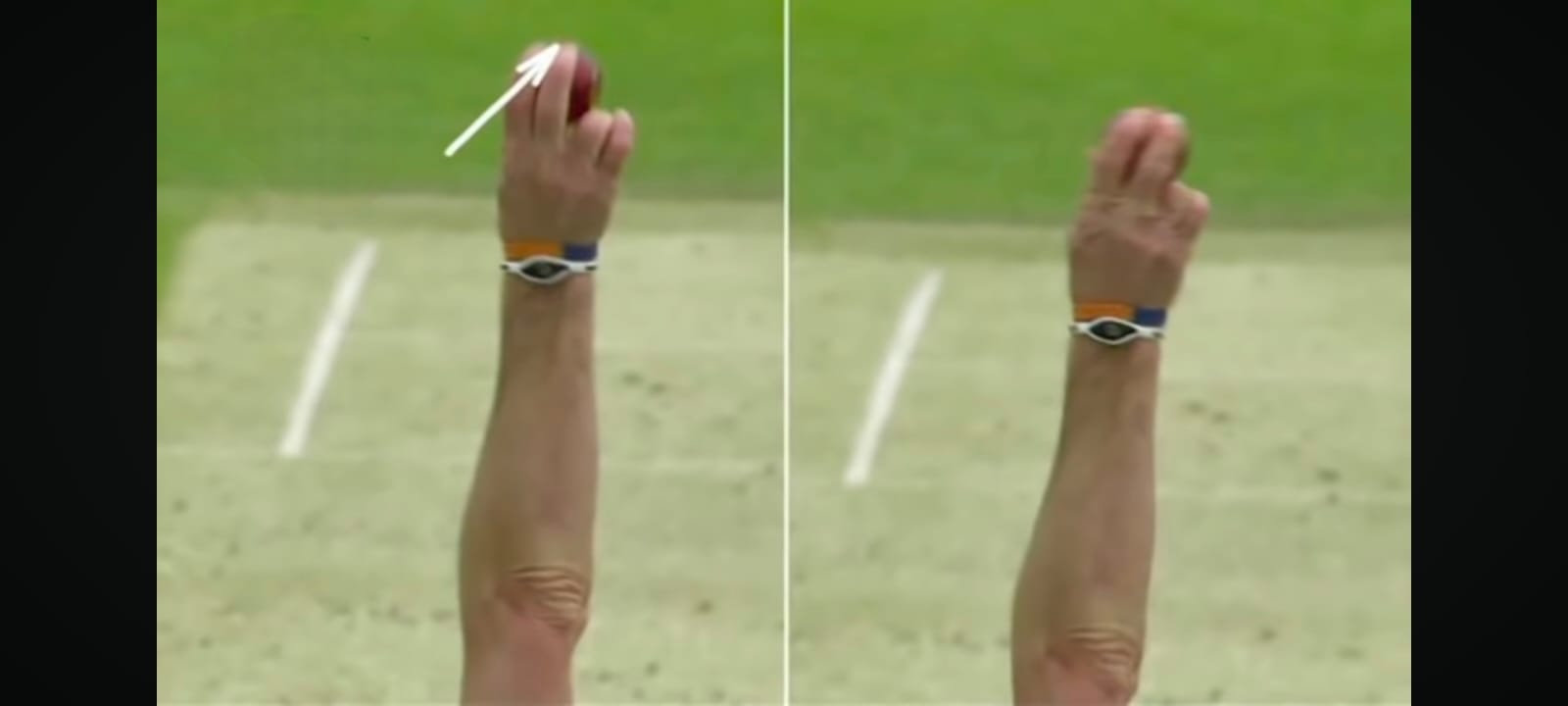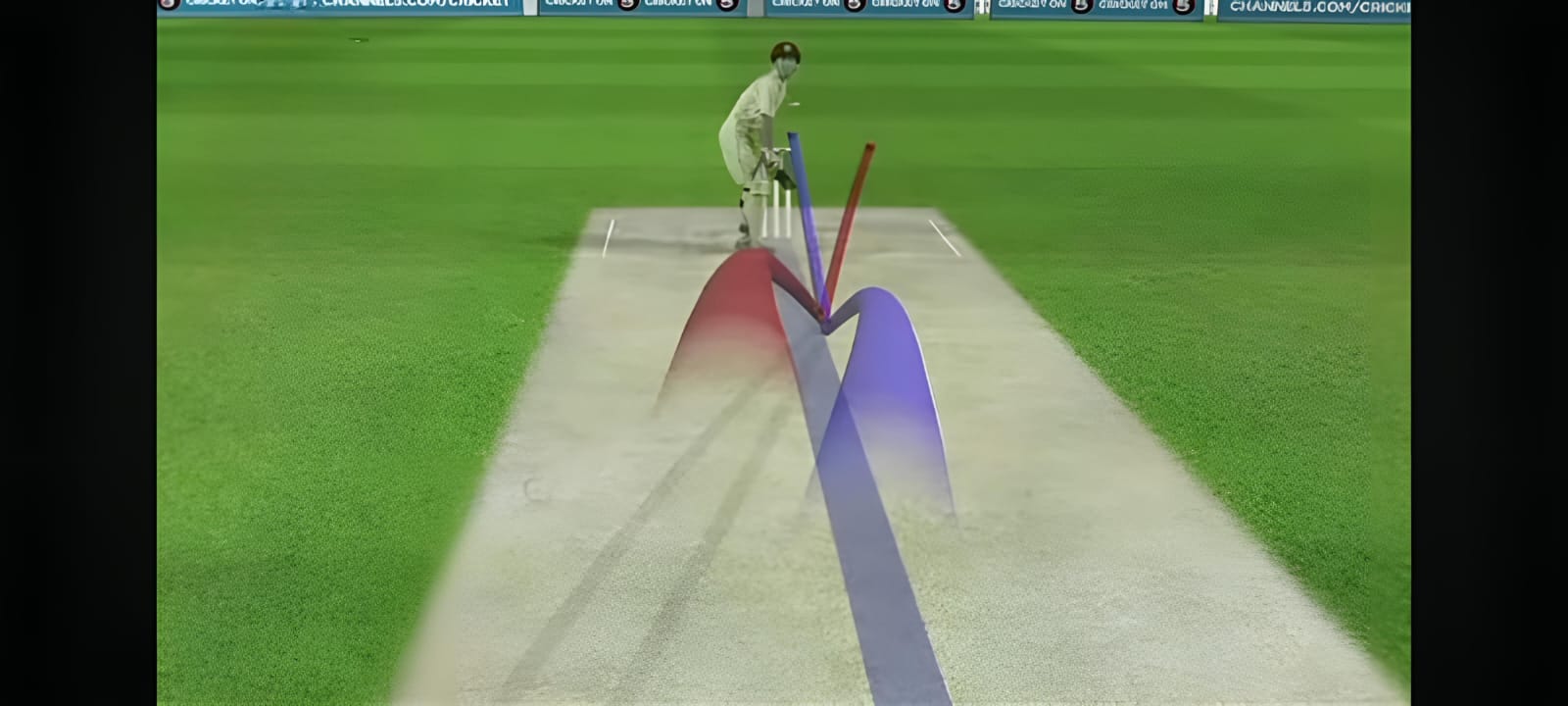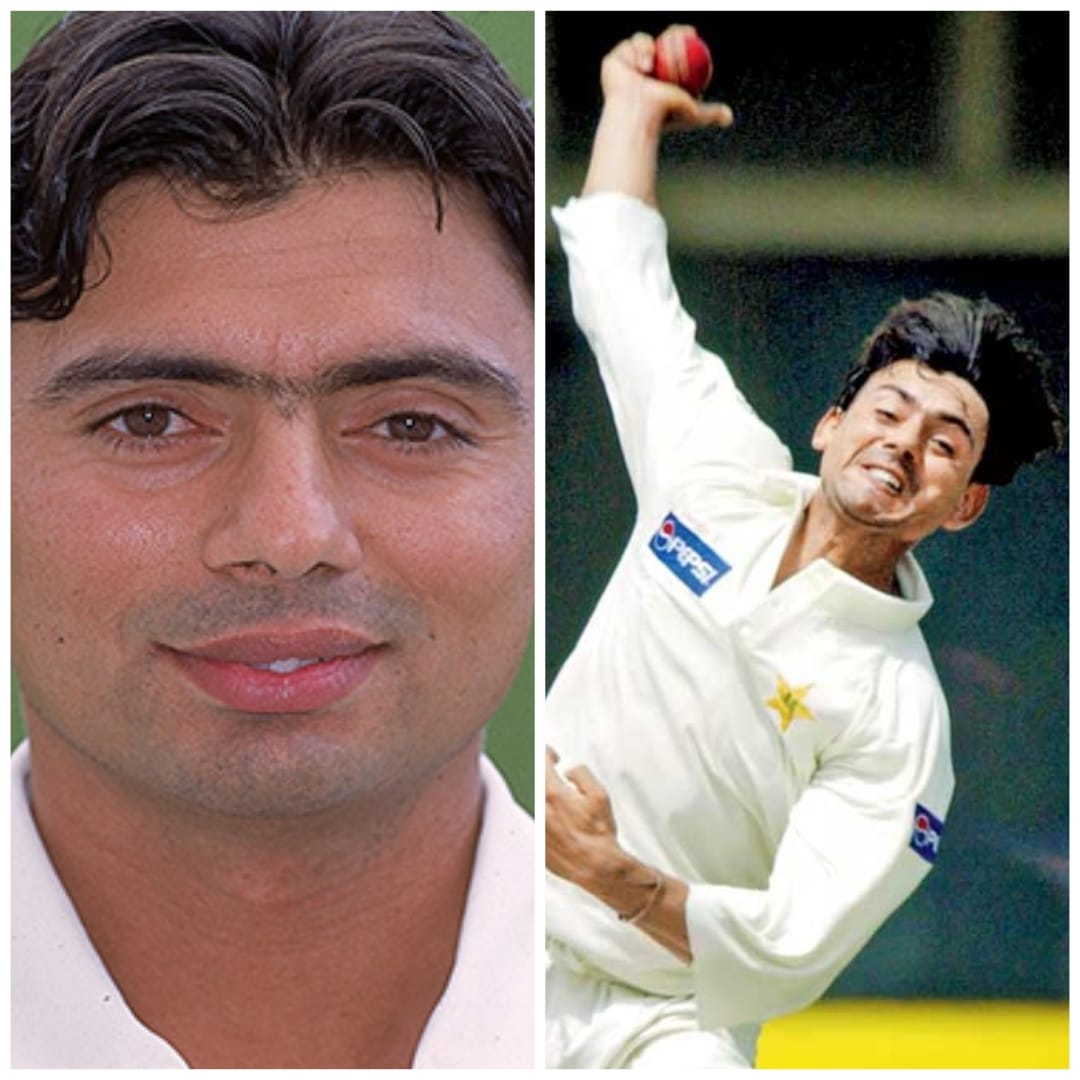How to Play Slower Ball in Cricket?
Table of Contents
Cricket is a game of strategy and skill, and one important aspect of batting is being able to play different types of deliveries effectively. One such delivery is the slower ball, which is a deceptive and crafty option used by bowlers to outfox the batsman.
In this article, we will discuss some tips and techniques on how to play the slower ball in cricket. By understanding the variations and practicing specific techniques, you can become more confident and successful in facing these deliveries.

“There’s nothing wrong in bowling 24 slower balls in a T20 spell.”
Harshal Patel (in his interview with the cricket monthly)
1. Understanding the Different Types of Slower Balls:
The slower ball can be bowled using different techniques, and it’s important to be able to recognize the variations. Some common types of slower balls include:
- Back of the hand: The bowler releases the ball with the back of the hand facing the batsman, creating extra bounce and making it difficult to time the shot.
- Fingers rolled over: The bowler rolls their fingers over the ball, similar to a spin delivery, which can generate deviation and change in pace.
- Split-finger grip: The bowler spreads their index and middle fingers wide apart while gripping the ball, causing it to drop slower and skid off the pitch.
By watching the bowler’s hand closely, you can pick up on these cues and anticipate the type of slower ball being bowled.
2. Practice in the Nets:
When practicing in the nets, ask the pacers to bowl slower balls to you as a surprise element. This will help you develop the ability to read the variation early and react accordingly.
Visualize yourself in a real match scenario and ask the bowler about the field settings, which will help you understand where to place your shots.
3. Play the Ball on its Merit:
When facing a slower ball, resist the urge to premeditate a shot. Instead, play the ball on its merit and adjust your objective based on the scenario of the match and your batting order.
If the ball is in your scoring zone, you can look to hit it into gaps and along the ground for boundaries. Avoid scooping or lofting the ball in the air, as this increases the likelihood of getting caught.
4. Watch the Hand Movement:
The key to playing the slower ball effectively lies in picking up the hand movement of the bowler. Some of the best players in the game have extraordinary skills in reading the line, length, and speed of the delivery.

If you find it difficult to pick up the hand movement due to background distractions, focus on tracking the ball in the air and observing its revolutions.
5. Adjust Your Footwork:
Move your feet according to the length of the slower ball. Swift movements on the front foot or back foot will help you position yourself better and play the shot with control and precision.
By having quick footwork, you can adjust to the slower pace of the ball and play it confidently.
6. Build Arm Strength:
To hit the slower ball for a six, you will require more power in your shots. Work on building arm strength through regular strength training exercises and practice hitting the ball with greater force. This will help you generate enough power to clear the boundaries when facing the slower ball.
7. Control Your Bat Speed:
When practicing in the nets, pay attention to the distance the ball carries when you hit it in the air. This will give you an idea of how far the ball might be caught if you were facing a similar delivery in a match.
Emphasize controlling your bat speed to ensure you execute the shot properly and find the gaps for runs.
8. Focus on Timing and Elevation:
The most important aspect of playing the slower ball effectively is to middle the ball with perfect timing and elevation. If you have the right balance, timing, and elevation in your shot, the ball has a higher chance of sailing over the boundary for a maximum.
Different types of slower balls in cricket.
Here are some tips for dealing with slow bowlers, anticipating variations in pace and spin, and adjusting the batting technique for slow deliveries.:
1. Off-Cutter and Leg-Cutter:
Batsmen should anticipate the movement off the pitch and adjust their shot selection and timing accordingly. Remember, footwork against the slow bowlers is the key.
2. Knuckle Ball:.

Batsmen need to closely watch the bowler’s hand at the point of release to pick up any subtle changes in grip that indicate the delivery of a knuckle ball. They should be prepared for a significant reduction in pace and adjust their timing to play the ball late.
3. Back-of-the-Hand Delivery:
Batsmen should watch for the bowler’s wrist position and be prepared for a slower, dipping delivery. They need to adjust their timing to account for the late dip and the reduced pace of the ball.

4. Grip Position Slower Balls:
Some slower balls are bowled with the same action but a change in grip. Batsmen should be vigilant for any variations in the bowler’s grip and anticipate a change in pace. They need to adjust their timing and shot selection based on the cues they pick up from the bowler’s hand position and release.
5. Holding the Ball Deeper in the Fingers:
Batsmen should be aware that when the ball is held deeper in the bowler’s fingers, the release of the ball can be delayed without a change in arm speed. They should watch for any signs of this grip and be prepared for a slower delivery.
By making these adjustments and being attentive to the bowler’s cues, batsmen can improve their ability to play different types of slower balls effectively
Slower Ball Symphony: Deconstructing and Defeating Variations
The art of bowling slower balls is akin to composing a deceptive symphony, each variation a distinct instrument whispering promises of unplayable deliveries.
As a batsman, understanding these instruments and their melodies is key to harmonizing your own rhythm and composing a score of runs.

Let’s dive into the individual “notes” of the slower ball repertoire, uncovering their secrets and crafting strategies to counter their deceptive charm.
The Off-Cutter: A Fork in the Road:
- Release mechanics: The bowler subtly rolls their fingers across the seam, imparting less backspin and creating a late deviation away from the batsman.
- Ball movement: The ball initially appears to come straight on, but just before reaching the batsman, it dips and drifts off towards the off-side, often bouncing away from the pitch.
Counter-strategies:
- Watch the seam: Focus on the seam’s orientation at release. A slightly angled seam hints at an off-cutter.
- Late movement: Stay patient and wait for the late off-swing. Play with a straight bat and close to your body, minimizing the chance of edging.
- Footwork finesse: A small step forward can adjust your reach and allow you to drive through the line of the ball, potentially finding the gap for a controlled shot.
The Leg-Cutter: A Deceptive Dive:
- Release mechanics: The bowler rolls their fingers across the seam towards the leg-side, generating slight topspin and causing the ball to dip and move inwards.
- Ball movement: The initial trajectory appears leg-side, but with a late inward swerve and dip just before reaching the batsman, it can be unplayable if misjudged.
Counter-strategies:
- Read the angle: Pay close attention to the bowler’s run-up and release angle. A more across-the-wicket approach hints at a leg-cutter.
- Stay inside the line: Don’t chase the ball wide. Play late and stay close to your body, allowing the ball to come in.
- Step back early: A small step back can adjust your reach and give you room to play across the line, potentially driving the ball through the off-side.
The Back-of-the-Hand Seduction:
- Release mechanics: The bowler releases the ball from the back of their hand, sacrificing pace for greater deception and dip.
- Ball movement: The ball appears to lose significant pace without obvious swing, often bouncing lower than expected and catching the batsman by surprise.
Counter-strategies:
- Trust your eyes: Don’t be fooled by the slow release. Watch the ball closely and be prepared for a sudden drop in pace.
- Short stride forward: A small step forward can help adjust your reach and compensate for the lower bounce.
- Playing down: Play the ball late and close to the ground, aiming for controlled drives along the carpet or flicks over the mid-wicket region.
Beyond the Trio: A Glimpse into Other Variations:

- The Doosra: A spin bowler’s version of the leg-cutter, delivered with wrist spin and producing a late inward swerve. Similar counter-strategies to the leg-cutter apply.
- The Split-finger: A slower ball bowled with fingers spread wide on the seam, creating unpredictable bounce and late swing. Focus on playing the ball late and adjusting your feet based on the movement.
Remember, mastering the counter-melody to the slower ball symphony requires practice, patience, and a keen eye. Study the bowlers, decode their deliveries, and fine-tune your footwork and timing.
Soon, you’ll be dancing to your own rhythm, leaving the deceptive notes of the slower ball behind and composing a symphony of runs on the scoreboard.
Conquering Slower Balls in Cricket (With Expert Insights)
“Understanding the variations is crucial. The off-cutter dips and drifts away, the leg-cutter deceives with late inward swerve, and the back-of-the-hand slows significantly without obvious swing.”
As former Australian skipper Ricky Ponting explains
“Footwork is like a conductor controlling the tempo. Take decisive steps forward or back, adjusting your distance to the pitch with grace and precision.”
As England batting coach Marcus Trescothick advises
“Play late with controlled swing. Meet the ball at its peak instead of chasing it down. Let the bat do the work, transferring the slower ball’s momentum into a precise shot.”
As batting legend Sachin Tendulkar emphasizes
“Patience is key against slower balls. Don’t be tempted by outside deliveries. Focus on balls you can play with confidence and punish them.”
As Indian batting maestro Virat Kohli warns
Practice Makes Perfect: Hone Your Skills in the Nets
Like any art, mastering the art of playing slower balls requires practice. Befriend your net sessions, peppering them with slower ball variations bowled by a trusted friend or using a bowling machine.
Experiment with different footwork and timing adjustments, feeling the subtle differences in your bat swing and shot execution.
“Practice is the foundation of mastery. Use net sessions to experiment, develop muscle memory, and refine your techniques against slower balls.”
As batting coach Rahul Dravid suggests
Cricket: Conquering the Pitch and Your Health
While the thrill of a six soaring over the boundary or a diving catch ignites passion, cricket also presents potential health risks to players of all levels.
It’s vital to be aware of these risks and prioritize proper technique and safety equipment to play the game you love while safeguarding your well-being.
The Hidden Cost of Passion:
- Muscle strains and overuse injuries: The repetitive nature of bowling, fielding, and batting can lead to muscle strains, tendonitis, and stress fractures, particularly in the shoulders, elbows, back, and knees.
- Heatstroke and dehydration: Long hours on the field, especially in scorching conditions, can lead to dehydration and heatstroke if proper hydration and sun protection are neglected.
- Head injuries: Collisions with fielders, fast-flying balls, and even ground conditions can pose a risk for head injuries. Helmets and proper awareness are crucial.
- Eye injuries: Similar to head injuries, mistimed shots or flying debris can put your eyes at risk. Protective eyewear is a must for both batters and fielders.
Playing it Safe:
- Technique is key: Proper technique from bowling to batting minimizes stress on muscles and joints, reducing the risk of injuries. Seek coaching to refine your form and build a strong foundation.
- Listen to your body: Don’t push through pain. Resting when needed helps prevent overuse injuries and allows your body to recover.
- Hydration is your ally: Stay hydrated throughout the game, before, during, and after, to ensure optimal performance and prevent dehydration.
- Gear up for safety: Invest in good quality protective gear, including helmets, pads, gloves, and eyewear. Choose equipment that fits well and offers adequate protection.
- Know the signs: Be aware of the signs of dehydration, heatstroke, and potential injuries. Act quickly and seek professional medical attention when needed.
By prioritizing proper technique, listening to your body, and equipping yourself with the right gear, you can turn the passionate pursuit of cricket into a healthy and fulfilling one.
Remember, conquering the pitch also means conquering your own well-being, ensuring you can continue hitting boundaries and taking exhilarating catches for years to come.
Famous bowlers with deadly slower ball in Cricket
Here are some famous fast bowlers with deadly slower balls in cricket:

- Wasim Akram (Pakistan): One of the greatest fast bowlers of all time, Akram possessed a deceptive slower ball that often left batsmen bamboozled. He used to disguise it well with his quick bowling action, making it even more unplayable.
- Waqar Younis (Pakistan): Like his partner Akram, Younis also had a lethal slower ball in his arsenal. He used to bowl it at different speeds, making it even more difficult for batsmen to pick.
- Mitchell Starc (Australia): The current spearhead of the Australian pace attack, Starc’s slower ball is a genuine weapon. He bowls it with a lot of dip and deception, making it very difficult to hit.
- Jasprit Bumrah (India): One of the most exciting young fast bowlers in the world, Bumrah’s slower ball is already a talking point. He bowls it with a lot of pace variation and accuracy, making it very effective.
- Lasith Malinga (Sri Lanka): Malinga is known for his unorthodox bowling action and his slower ball is no different. He bowls it with a lot of side-arm action, making it very difficult for batsmen to pick up.
- Shoaib Akhtar (Pakistan): Known for his raw pace, Akhtar also had a handy slower ball in his arsenal. He used to bowl it at different speeds and lengths, making it very difficult for batsmen to handle.
- Brett Lee (Australia): Lee was another Australian fast bowler who had a good slower ball. He used to bowl it with a lot of bounce, making it very difficult for batsmen to play.
These are just a few examples, there are many other fast bowlers who have had success with their slower balls. The slower ball is a valuable weapon for any fast bowler, and it can be the difference between success and failure.
FAQs
What are the different types of slower balls?
Off-cutter: Dips and drifts away from the batsman.
Leg-cutter: Deceives with late inward swerve.
Back-of-the-hand: Slows significantly without obvious swing.
Doosra: Spin bowler’s version of the leg-cutter, with wrist spin causing inward swerve.
Split-finger: Unpredictable bounce and late swing due to wide finger placement on the seam.
How can I read the bowler’s intention for a slower ball?
Watch for subtle clues like:
Change in run-up or release angle: A more across-the-wicket approach might hint at a leg-cutter, while a slower arm speed could signal a back-of-the-hand delivery.
Seam orientation: An angled seam suggests an off-cutter, while a straighter seam could indicate a regular delivery.
What footwork adjustments should I make against slower balls?
Off-cutter: Small step forward to adjust reach and prevent edging.
Leg-cutter: Stay inside the line and step back slightly if needed.
Back-of-the-hand: Short stride forward to compensate for lower bounce.
How can I improve my timing against slower balls?
Play late: Wait for the ball to arrive at its peak before playing your shot.
Controlled swing: Don’t lunge or slog. Use a smooth bat swing and meet the ball with timing.
Focus on balls in your zone: Avoid chasing deliveries outside your reach.
What practice drills can help me master slower balls?
Net sessions: Have a friend bowl slower ball variations or use a bowling machine.
Shadow batting: Mimic the footwork and shot execution against imaginary slower balls.
Video analysis: Watch yourself bat and identify areas for improvement in footwork and timing.
Conclusion:
Remember, mastering slower balls is a journey, not a destination. Be patient, practice diligently, and trust your instincts.
Soon, you’ll be composing a masterful innings, one well-timed shot at a time!
Also read: Is IPL International Cricket?
James Paul is a former first-class cricketer and passionate cricket analyst. His decades of experience on the field and his love for the game shape his insights into the strategies and personalities that define world-class cricket.

Very Informative and in-depth. Way to go. I help me practice in nets. Thanks a TON.